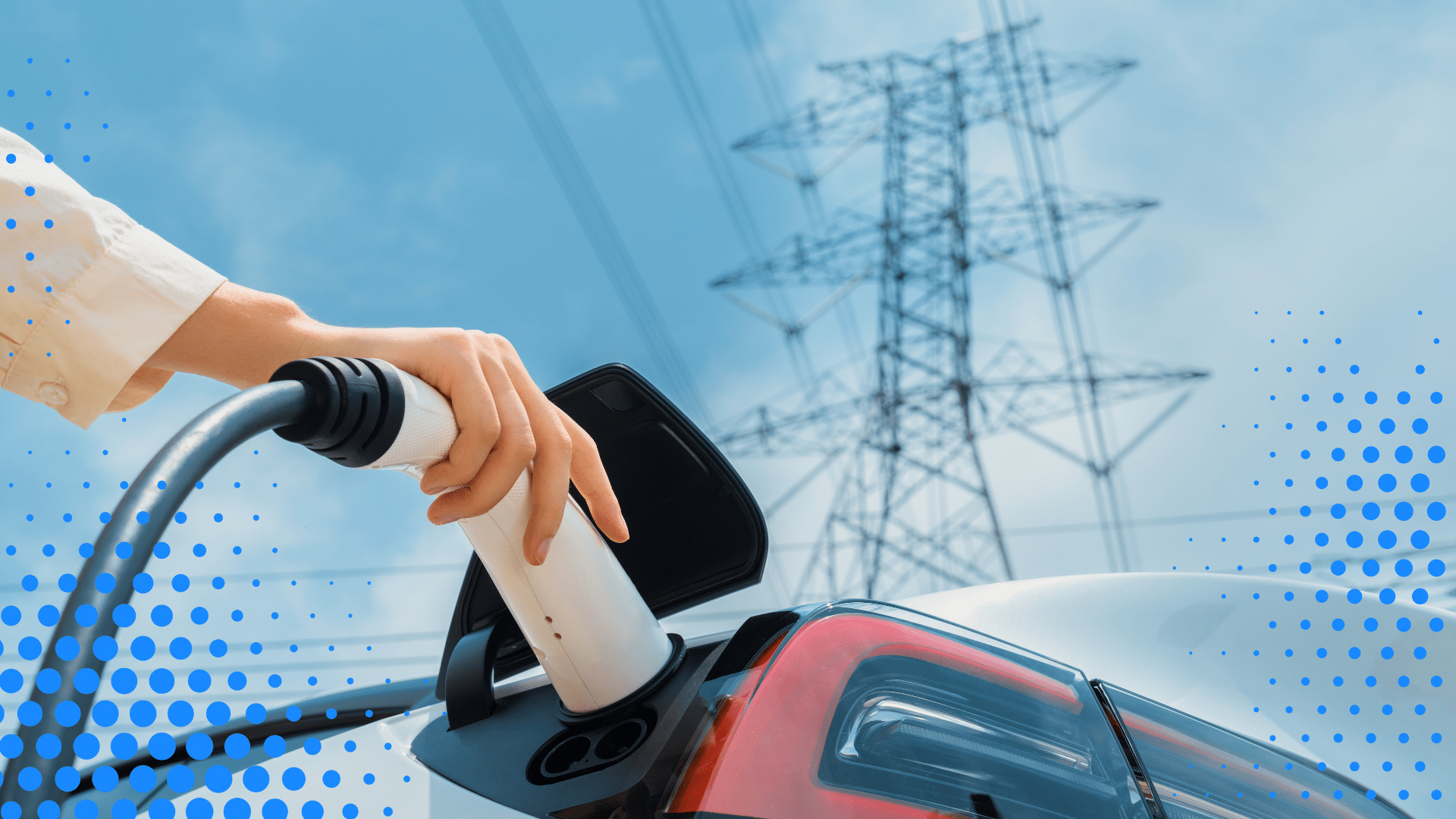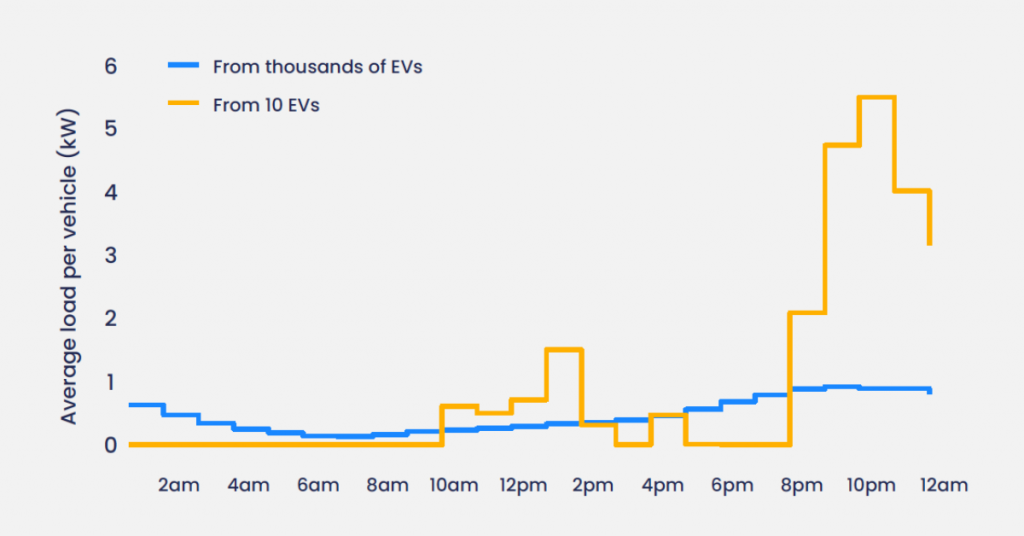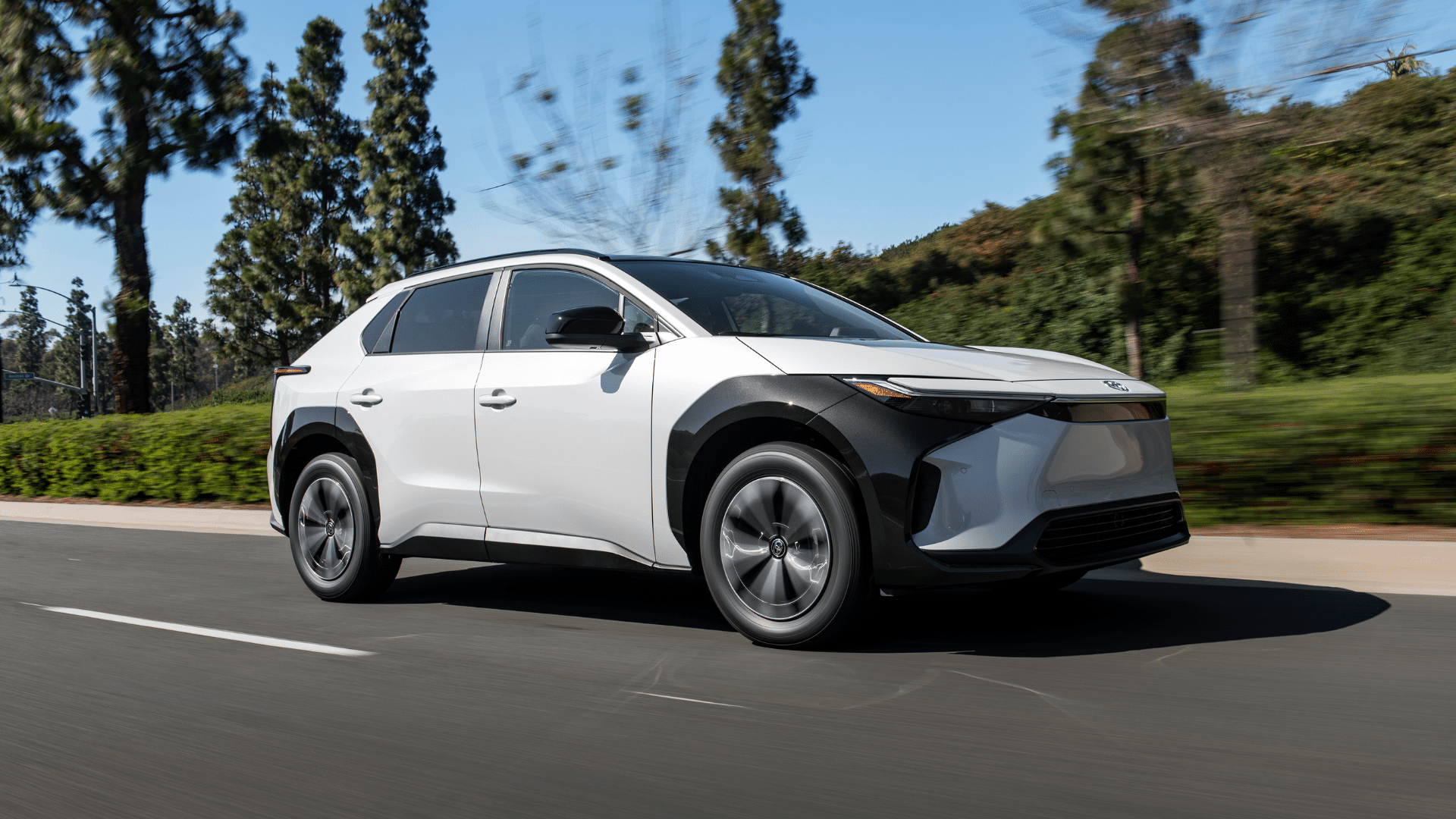
EnergyHub Team
January 22, 2024
This is the first article in EnergyHub’s four-part “Avoiding Gridlock” series on how managed charging can mitigate the distribution impacts of EV charging. Don’t miss part two, The distribution impacts of EV charging or part three, Why time-of-use (TOU) rates aren’t the long-term solution for managing local EV load.
Industry experts have cautioned that the electric grid will require significant investment in infrastructure improvements as more electric vehicles (EVs) hit the road. Meanwhile, the clock is ticking.
Last year alone, a record 1.2 million EVs sold in the U.S. Yet, fundamental questions remain on how to deploy infrastructure improvements efficiently and effectively. The dual challenges of finite resources and evolving consumer behavior mean it isn’t immediately clear when and how utilities should invest to support transportation electrification
One critical question is whether the industry should double down on improving the bulk grid or focus on shoring up distribution networks to avoid peak load issues associated with rising EV charging loads.
To answer this question, EnergyHub recently modeled the impacts of EVs at the bulk grid and distribution network levels. The results indicate that the bulk grid is in relatively good shape when it comes to meeting rising electricity demand, while the country’s aging distribution infrastructure provides more cause for concern.
Fortunately, managed charging programs present a significant opportunity to mitigate issues safely and cost-effectively. Below, we break down the differences in how EVs will affect the electric grid at the transmission and distribution levels to help the utility industry prioritize potential solutions.
The bulk grid vs. distribution networks
The bulk grid, or bulk electric system, is the centralized generation and large transmission lines that supply power to the U.S. and Canada. According to the North American Electric Reliability Corporation, the bulk electric system generally includes all transmission and real or reactive power resources of 100 kilovolts (kV) or higher. The system is divided into four regional networks (known as interconnections) across North America.
Distribution networks are the poles, wires, and transformers that connect homes and businesses in a neighborhood to the bulk grid. According to the Environmental and Energy Study Institute, there are over 50 million distribution transformers across the country delivering electricity from the bulk grid to buildings. Over two thirds of these transformers are more than 25 years old.
Both transmission and distribution networks will be affected by the rise of EVs. However, the impact looks very different at the local distribution level than at the regional bulk power system level.

What’s more demanding: 10 EVs or thousands?
Much like zooming in on the pixels of a photograph, the clear load shapes associated with EV charging at the bulk grid level devolve into erratic load shapes at local distribution transformers. This is where an EV’s high power draw while charging becomes an issue.
Consider this: Adding 150 million EVs to the US electric grid adds about 12 percent to overall electricity consumption and roughly 60 gigawatts (GW) of average power demand. However, because an EV only needs to charge a few hours a day and individual charging patterns vary widely, the load pattern is predictable and manageable across thousands of vehicles.
In aggregate, the average power demand for so many EVs increases the bulk grid capacity need during peak hours by just eight percent, which is far less than the 10 to 20 percent capacity reserve margins that are common in the U.S. Furthermore, the charging demand on peak load across the country is expected to rise by less than one percent a year. If utilities and customers broadly adopt incentive programs that shift EV load to off-peak periods, the bulk grid impact from EVs may be even smaller.
But consider the impact if just 10 new EVs plug into the same local distribution network. Each Level 2 home charger will consume around seven kilowatts (kW) at its peak, which is five times higher than the average home’s electricity load at any given time. If ten vehicles draw power from the same aging service transformer at the same time, they could cause voltage issues and damage even if the utility is generating plenty of power. See the graph below for a visual illustration of this comparison.

What’s the risk to customers and utilities?
The difference between the average load per vehicle from thousands of EVs versus ten has important implications for how EV charging will impact utilities. When estimating the impact of EVs on the bulk grid, it’s reasonable to focus on average EV load. But when estimating the impact of EVs on the distribution network, the utility industry must plan for the highly variable nature of those loads in order to avoid a potential negative impact on customers and infrastructure.
On the distribution grid, interventions that optimize EV charging will be key to avoiding challenges ranging from damage to service and substation transformers to voltage issues and energy losses. Download our white paper to learn more about which portions of the distribution network that are most likely to be impacted by EV charging, and how managed charging can help.
Stay tuned: In the next blog in our series, we’ll focus on the specific ways EV loads are likely to affect the distribution network, from substations to feeders and transformers to service cables.
Interested in keeping up with the latest dispatch from the grid edge?
Get our next post in your inbox.


